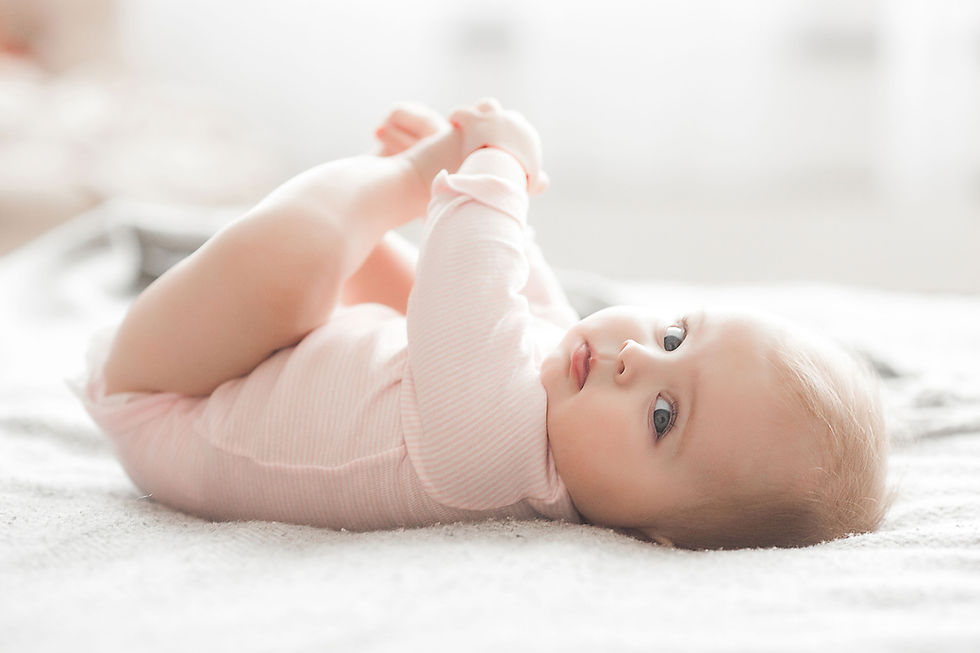The Importance of Play in Early Childhood Development
- johnhui1992
- Jun 4
- 4 min read
Updated: Sep 2

Babies experience remarkable growth and development from birth to age 6. During this critical period, play is essential for their overall development, playing a crucial role in enhancing not only their physical abilities but also their cognitive, emotional, and social skills. Through various forms of play, children engage with their environment, explore new concepts, and build the foundational skills necessary for their growth.
There are numerous types of play that contribute to early childhood development. These include:
Physical play: Running, jumping, climbing, and dancing that develop gross motor skills
Constructive play: Building with blocks, drawing, and crafting that enhance fine motor skills
Imaginative play: Role-playing, dress-up, and pretend scenarios that foster creativity
Social play: Group games, sharing activities, and cooperative play that build social skills
Sensory play: Sand play, water activities, and texture exploration that develop sensory awareness
Cognitive play: Problem-solving games, puzzles, and memory activities that enhance mental development
Language play: Word games, storytelling, and rhyming activities that promote communication skills
While different types of play work together to support a child's overall development, play activities should match the child's age and developmental stage.
To understand how play supports children's growth, let's examine how physical abilities develop step by step.
Physical Development Milestones From Birth to Age 6
A child's physical abilities and play capabilities progress steadily from birth through early childhood. As each developmental stage builds on the previous one, children engage in increasingly sophisticated forms of play and interaction.
Age Range | Physical Development Milestones |
0-3 months |
|
3-6 months |
|
6-9 months |
|
9-12 months |
|
Through 12-18 months, toddlers master independent walking, stair climbing with support, and may start running, while developing finer control for tasks like stacking blocks and using utensils.
Between 18-24 months, children show better running coordination that they can kick balls and climb easily, with enhanced fine motor skills allowing them to build block towers, scribble, and handle small objects with precision.
From the age of 2, toddlers show increasing skill in both gross and fine movements. They can lift, carry, climb, leap, run and walk up and down with alternating feet . They can pedal a tricycle, kick a ball and throw a ball without falling over. They can draw circles, thread large beads, and turn doorknobs.
Preschoolers at 3-4 years old can hop on one foot, catch a bounced ball, and use scissors to cut paper. Their drawing skills improve, allowing them to copy simple shapes and draw recognizable figures.
Children at 4-5 years old demonstrate improved balance through activities like skipping and standing on one foot. They can write some letters, draw detailed pictures, and use utensils proficiently.
Motor skills become more refined at 5-6 years old, allowing for activities like riding a bicycle, tying shoelaces, and writing their name. They show improved coordination in sports activities and can manipulate smaller objects with precision.
Throughout these stages, physical development enables increasingly complex play and learning opportunities. Each milestone builds upon previous achievements, supporting cognitive, social and emotional development alongside physical growth.
Montessori's Perspective on Play
Maria Montessori (1949) developed a unique and influential perspective on play in early childhood education, viewing it as essential for learning and development. Her approach emphasizes children's natural curiosity through purposeful activities that build independence and concentration. She views play as "work"—an activity children naturally engage in for self-development—while fostering physical growth through movement and sensory experiences. Through carefully structured play, children develop crucial life skills, cognitive abilities, and physical capabilities. These range from fine motor control, balance, and coordination to complex movements like climbing and dancing.
The Montessori approach profoundly influences children's physical development through several key mechanisms:
Prepared environment and freedom of movement: Creating spaces with developmentally appropriate materials that children can freely access and explore, allowing natural physical development through self-directed activities
Fine motor development: Practical life exercises like pouring, threading, and manipulating small objects help refine fine motor skills
Gross motor coordination: Activities like carrying materials, walking on the line, and balance exercises enhance overall body coordination
Sequential skill building: Materials and activities are designed to progress from simple to complex movements, supporting natural physical development

